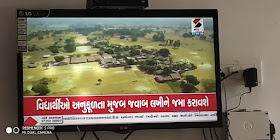Ekam Kasoti Realated Latest News
DiskDigger® is a tool that undeletes and recovers lost files from your hard drive, memory cards, USB flash drives — you name it! Whether you accidentally deleted some documents or photos from your computer, reformatted your camera's memory card, or want to see what files are lurking on an old USB drive, DiskDigger is here for you. See the complete list of features to learn more.DiskDigger has already helped millions of users around the world recover their lost files. What can it help you find today? Download it now and see for yourself!
Works with Windows 10, Windows 8, Windows 7, Windows Vista, Windows XP, and Linux.Time for another excellent update to DiskDigger for Windows, as well as DiskDigger for Android! Here is what's new in the Windows version:Performance improvements when undeleting files from NTFS filesystems on certain drives.Performance improvements when recovering files from HFS+ (Apple) and ext4 (Linux) filesystems.Improved support for recovering damaged or corrupted DVD and CD-ROM media.Improved detection of VOB video tracks on certain DVD media.Added support for recovering and previewing ILBM (Amiga bitmap) images.Improved support and detection of USB floppy drives.Fixed an issue when reading fragmented files from FAT12 partitions.
Get the Android version of DiskDigger now from the Google Play Store to recover photos and other types of files from the internal memory of your phone or tablet.The latest update to DiskDigger for Windows improves upon its general performance, as well as these specific enhancements:
Improved handling of compressed files in NTFS filesystems. When your disk is formatted with NTFS, individual files can be compressed (using a variation of LZ77) to conserve disk space. When scanning in "Dig Deep" mode, DiskDigger automatically and transparently decompresses these files, so that they can be recovered in their original state.
Improved handling of system-compressed files in NTFS. Windows 10, as part of its background operation, searches for certain files that are seldom used and automatically compresses them. This is different from the "standard" compression that can be applied to NTFS files. This compression is done by creating an alternate data stream (with a reparse point) called "WofCompressedData" and filling it with the compressed data, which is compressed with the Xpress or LZX algorithms. DiskDigger handles all of these cases, and automatically recovers these types of files in uncompressed form.
Added support for recovering Quicken data files (.QDF) in "Dig Deeper" mode.
Improved efficiency of recovering executable (EXE and DLL) files.
Fixed some possible stability issues when previewing WAV audio files.
In other news, DiskDigger for Android also received an update, with improvements to its "Wipe free space" function, which is now faster and more effective than before.
Support for recovering FITS images (Flexible Image Transport System) in "Dig Deeper" mode. FITS is the image format used in astronomy, and is endorsed by NASA and the International Astronomical Union. This type of file can contain many different types of data besides actual images, and DiskDigger can now recover all of them.
Support for recovering SER videos, which is a video format used in astronomical imaging.Support for recovering AAX (Audible Enhanced Audio) files, which is the DRM-protected audio format used by Audible.Support for recovering DjVu (.DJVU) documents.Improved detection of corrupted partitions on a GUID partition table (GPT).
And of course there are a few minor enhancements to DiskDigger for Android, which include optimized performance on older devices, as well as improvements to Clean Up mode. I’m happy to announce some exciting new features in DiskDigger for Windows, as well as in DiskDigger for Android!Let’s go over the Windows version first:
Support for recovering Opus audio files (when scanning rooted devices). The Opus format is used by WhatsApp for saving audio messages, which means that you can now recover WhatsApp voice notes. This format is also often used for ringtones and by other media recording apps.
At last, you can now preview recoverable video and audio files, in place, without having to recover them first! (Previously only photos could be previewed.) Tap the "play" icon next to each recoverable file to show the preview dialog, then use the playback controls to play, pause, rewind, etc. (Note that this feature is only available on Android Marshmallow (6.0) and above.)
Wiping of free space is done by creating a temporary file and filling it with random data, until it consumes the entire amount of free space on your device. When the temporary file begins to reach the limit of free space, the Android system will usually display a notification that your available space is running out. You should ignore this notification until the wipe process is complete. When it finishes, it will delete the temporary file and free up the remaining space again.
It is possible that the Android system will stop DiskDigger from being able to write to the temporary file before the memory is completely full. This means that there is a possibility that not all of the free space will be wiped, and some deleted data might still be recoverable. You can always re-run DiskDigger and scan your device's memory to ensure whether the wipe was successful.
The wiping is done only on the internal memory of the device. The ability to wipe an external SD card will be added in a future version.
It's important to note that because the wiping is done by overwriting all the free space, it means that the process inflicts a significant amount of wear on the device's memory. This can potentially shorten the life span of the memory, and should be performed sparingly, and only when necessary.
Cleanup Mode is currently available only in the Basic Scan. Making it available in the Full (rooted) scan is quite a bit more complex, and will be available in a future version.The Cleanup screen is divided into two tabs: "Thumbnail caches" and "Photos." This is because a thumbnail cache (a file that contains multiple thumbnails) must be deleted as a whole, which would delete all the thumbnails contained in it. Therefore the app allows you to examine these thumbnail caches, as well as individual photos, and select which ones you want to delete.
Since the deletion is done at the filesystem level, the contents of the deleted files are not physically wiped from the device's memory, and may still be recoverable if the device is rooted. In fact, even physical wiping of the files' contents is unreliable with flash memory, which employs wear-leveling that might redirect the overwritten data to a different physical location.
In the near future, look for further enhancements and updates to the Cleanup feature. And as always, DiskDigger for Android and DiskDigger for Windows are still the best choice for your data recovery needs.


























No comments:
Post a Comment